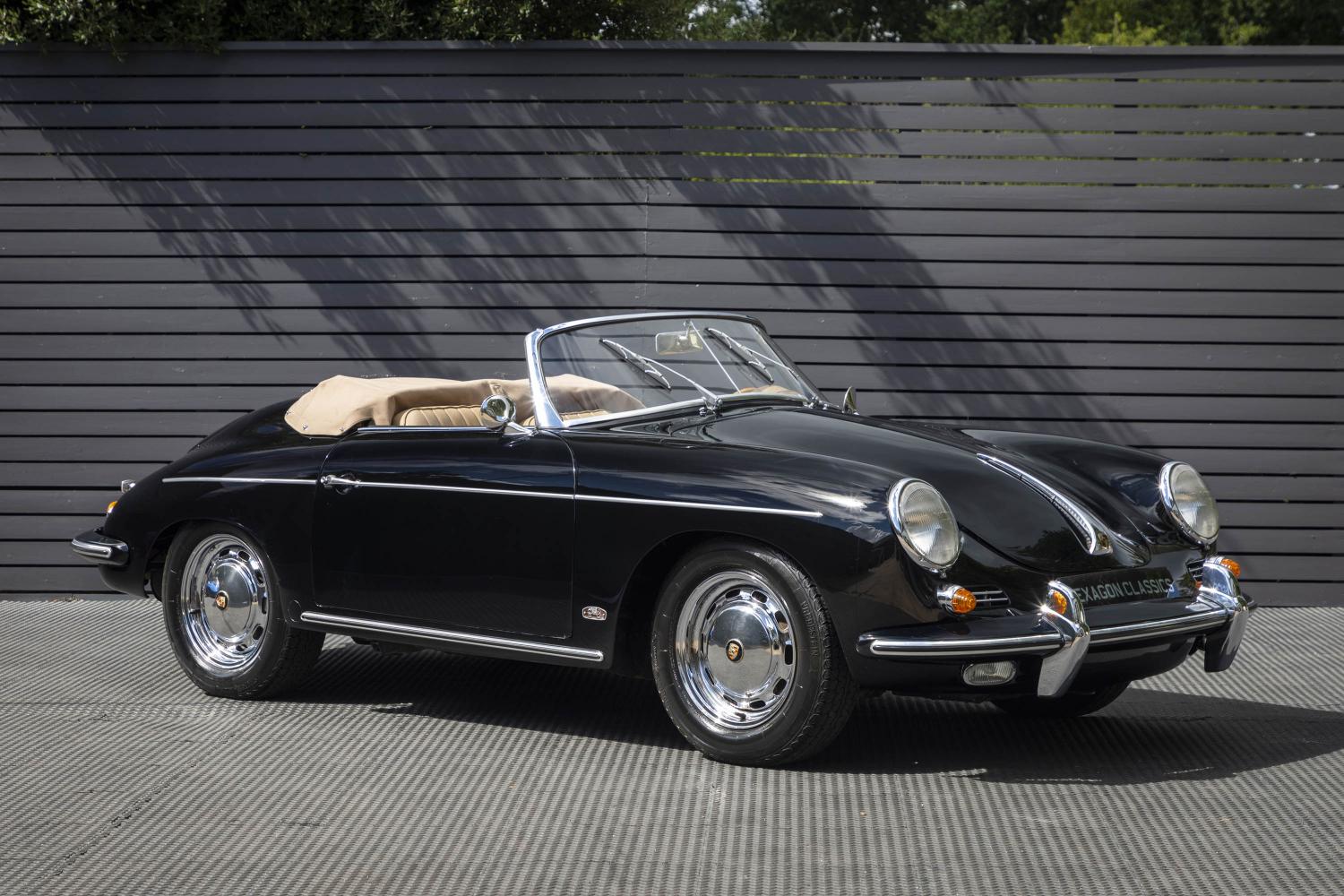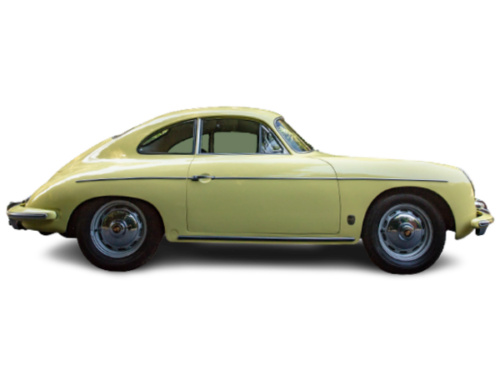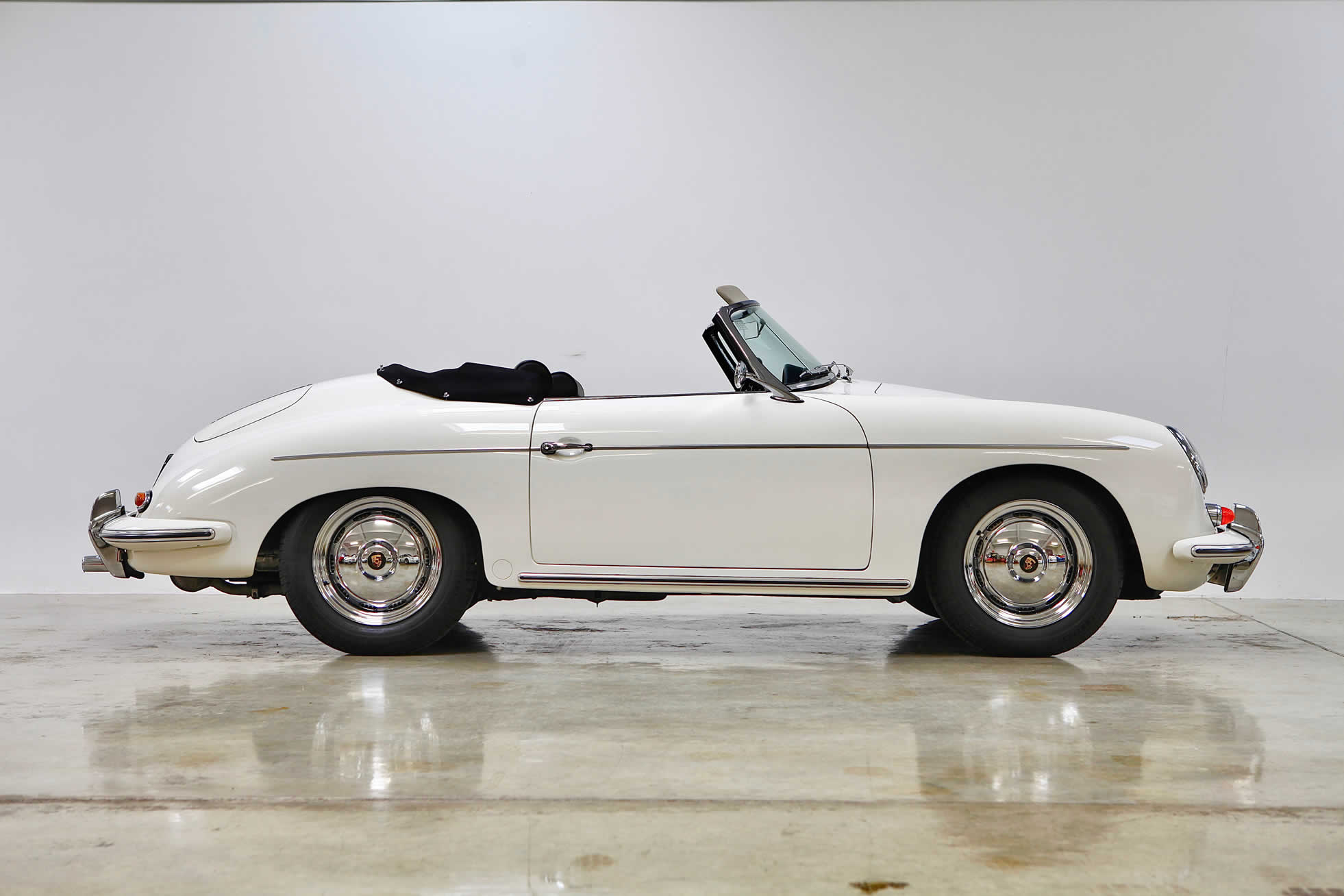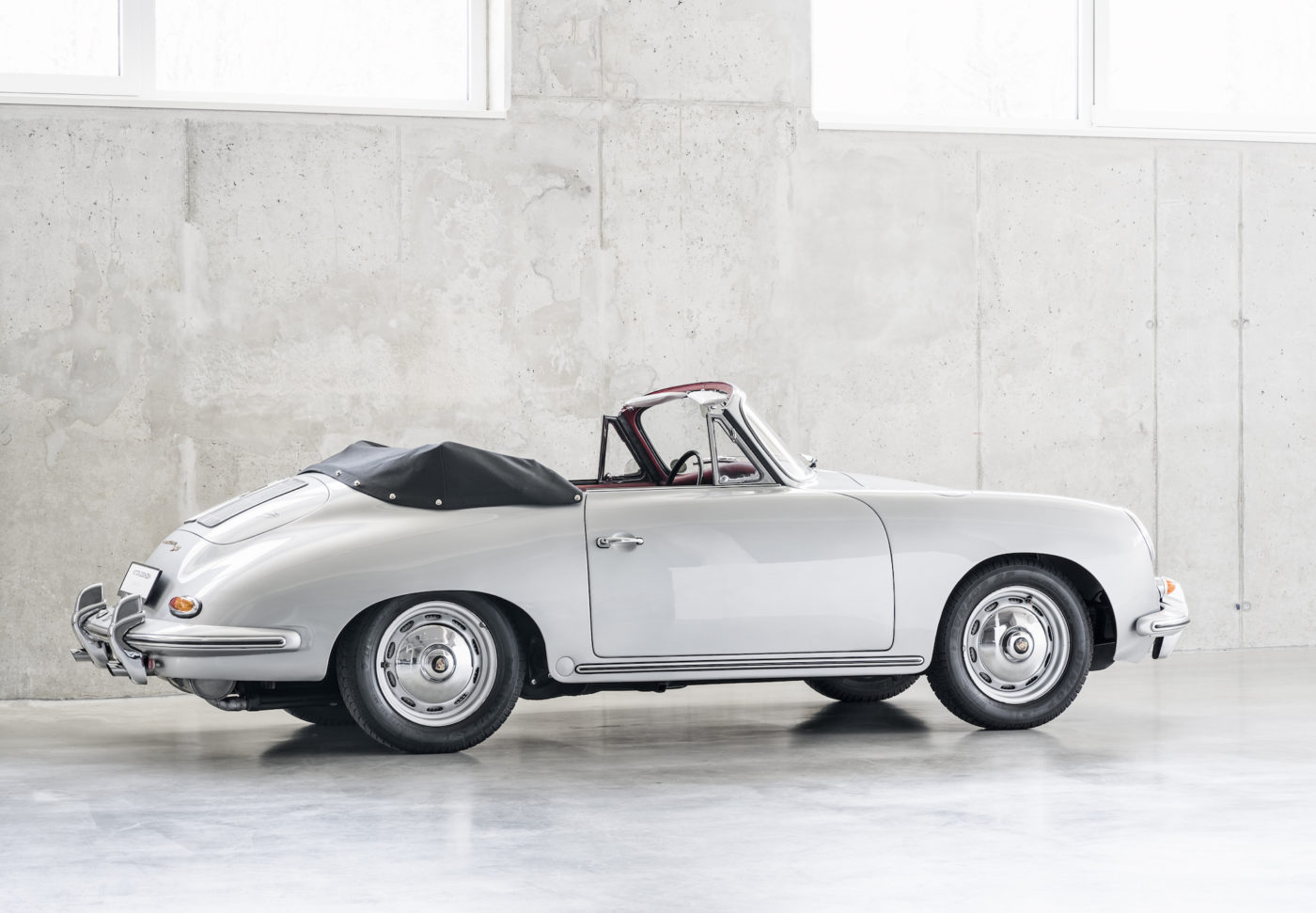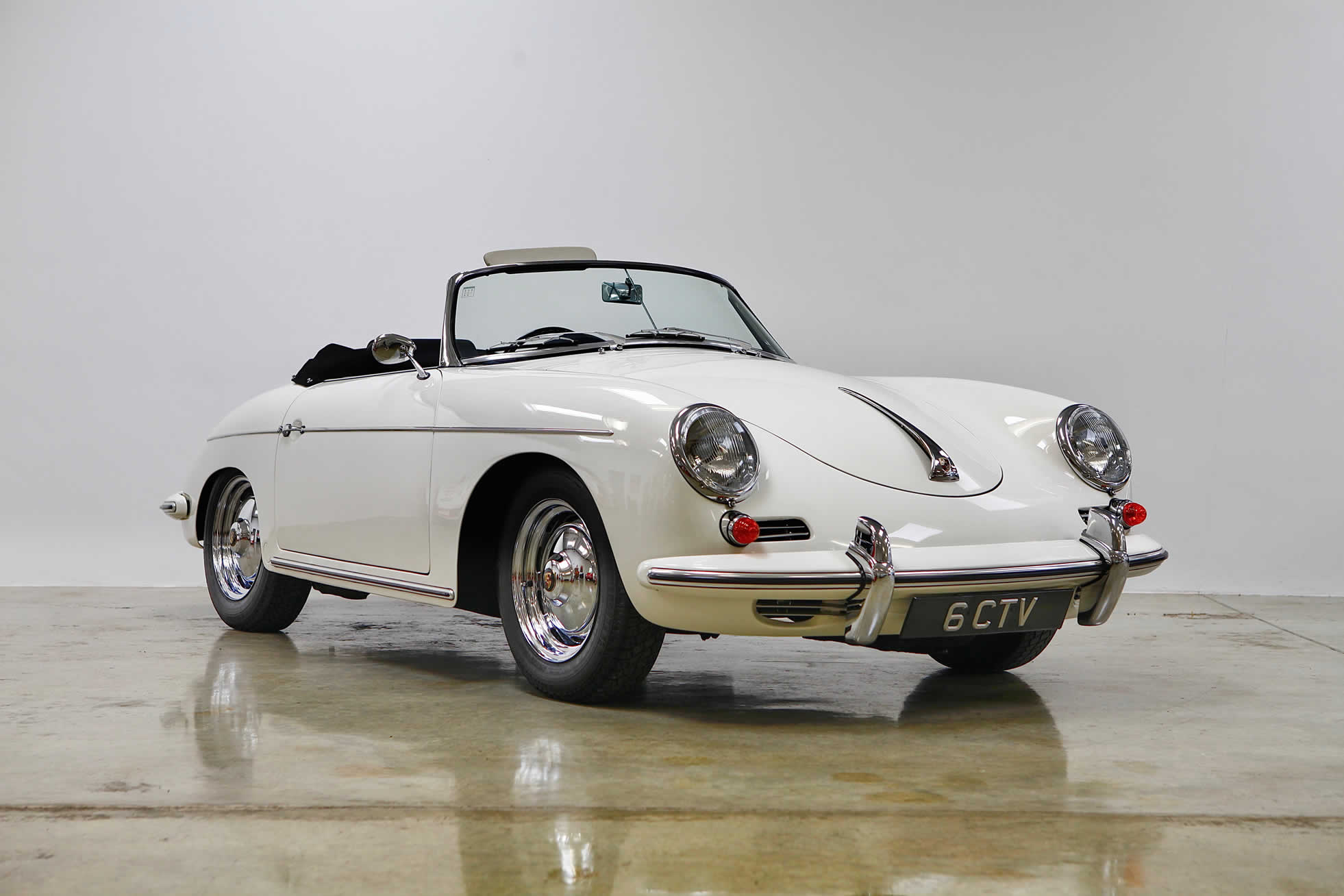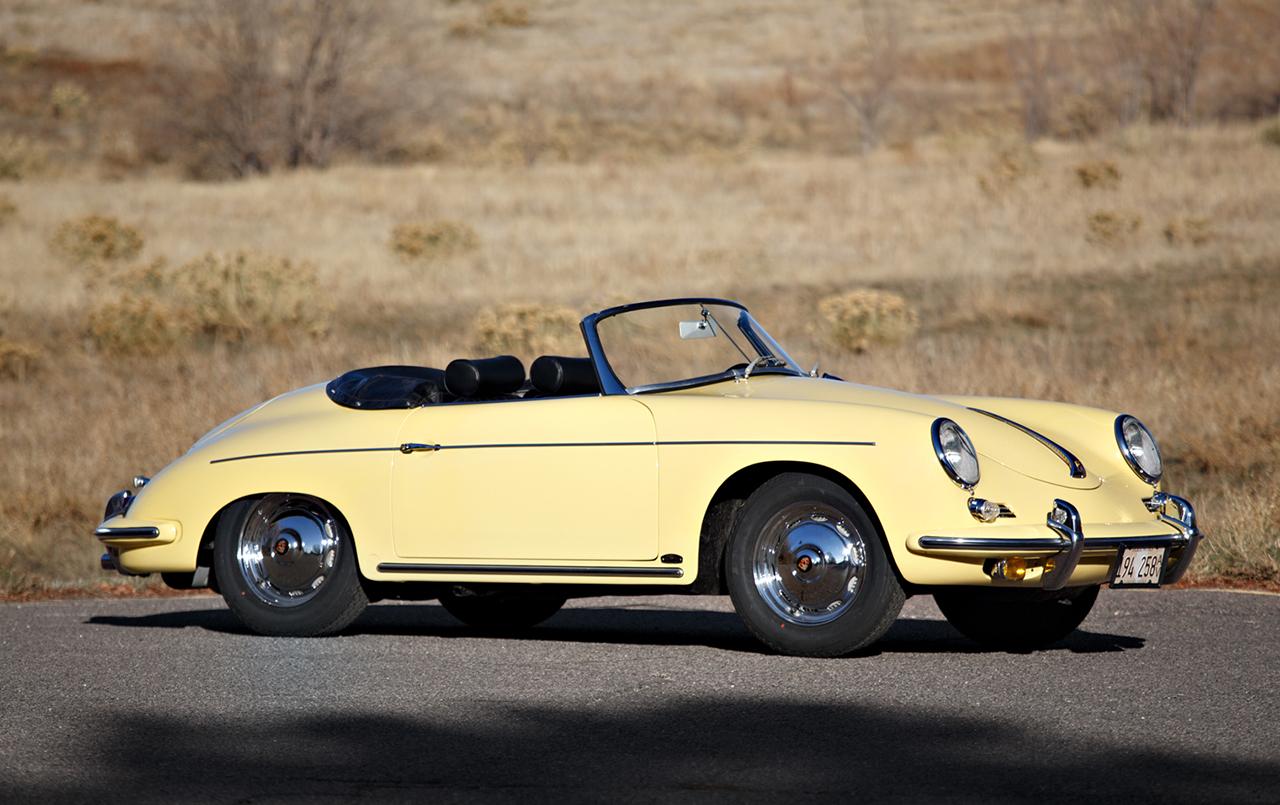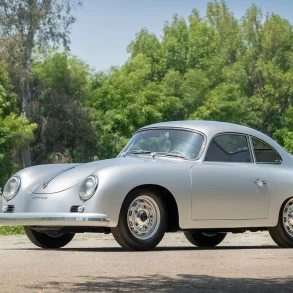1959 – 1963 Porsche 356B/1600 Super 90 – Ultimate Guide
In September of 1959 Porsche revealed their fully updated 356 known as the 356B. This had a completely revised body that was more suitable for the American market. The 356B used the new T5 bodystyle which raised the front and rear bumpers nearly four inches. Furthermore the headlights were also repositioned higher to meet American regulations. The 356B used the new T5 bodystyle which raised the front and rear bumpers nearly four inches. Furthermore the headlights were also repositioned higher to meet American regulations.
New to the model was the Type 616/7 Super 90 engine which was an indirect replacement for the Carrera de Luxe models. The engine was fully revised with a new intake manifold, a larger Solex 40 PII-4 carburetor and the Carrera air filters. Other detail changes included 9.0:1 pistons, stronger valve springs, a different crankshaft with 55mm main bearings. The other engines were only slightly upgraded for the T6, but the Super 90 received a A12 Haussermann clutch.
There were several variants with the base 1600 engine:
- Porsche 356 B 1600 Super 90Coupe (T5) (1959 – 1961)
- Porsche 356 B 1600 Super 90Cabriolet (T5) (1959 – 1961)
- Porsche 356 B 1600 Super 90Roadster (T5) (1959 – 1961)
- Porsche 356 B 1600 Super 90Notchback Coupe (T5) (1961)
- Porsche 356 B 1600 Super 90 Coupe (T6) (1962 – 1963)
- Porsche 356 B 1600 Super 90Cabriolet (T6) (1962 – 1963)
- Porsche 356 B 1600 Super 90Roadster (T6) (1962 – 1963)
- Porsche 356 B 1600 Super 90 Notchback Coupe (T6) (1962 – 1963)
The Coupe
The 356 B T5 Coupe was the direct replacement of the Porsche 356 A Coupe and accounted for approximately 70% of the total 356 B T5 production, with approximately 12,000 cars produced. The T5 Coupe bodies were produced by German coachbuilder company Reutter, which was in charge of most Porsche 356 Body production since the mid-1950s. The 356 B T5 Coupe played a huge role in the growth seen by Porsche in the early 1960s. Like the Cabriolet, Roadster, and Notchback Coupe siblings, the Coupe was offered with 1600, 1600S, S90, and Carrera engine options paired to a four-speed synchromesh 741 transmission.
The Porsche 356 B T6 Coupe was built on the success of its very popular predecessor: the Porsche 356 B T5 Coupe. In late 1961, Porsche introduced the T6 updates and produced the first run of about 1,400 cars in that same year, all of them through Reutter, the traditional coach builder for 356 Coupes in the past. Nonetheless, in 1962 Porsche reached out to Karmann, the company which had produced the Notchback Coupe to produce the regular Coupe variant. In total, the 356 B T6 Coupe production increased 50% over the T5 Coupe production, and saw four times as many cars built as any other 356 B T6 variant. After a total production run of approximately 12,000 cars, Porsche decided to make a few structural and technical changes to the T6 Coupe and launched the fourth generation (and last) Coupe: the Porsche 356 C Coupe.
The Notchback Coupe
Officially designated as the Porsche 356 B Hardtop, the Notchback Coupe was another two-door fixed-roof variant of the 356 B T5. Introduced in 1961 and built by Karmann (the same company that built the VW Karmann Ghia and Convertible VW Beetle), the T5 Notchback coupe was produced only during 1961 for a limited run of a little over 1,000 cars. It is rumored that the Notchback appeared because Porsche found many customers in Europe that bought a Cabriolet with a hardtop and no soft-top, thus assuming there was a market for a fixed hard-top variant of the 356 Cabriolet. Thus, they designed the Notchback as a Cabriolet body with a Hardtop welded in place, with no window frames, and unique interior finishes around the doors as well as special carpeting. At the end of 1961, the T5 Notchback evolved into the Porsche 356 B T6 Notchback.
After the Porsche 356 B was updated to the new T6 bodies, one of the cars that received some of the most significant changes with the re-design was the T6 Notchback Coupe. Instead of being a Cabriolet with a welded Hardtop, the roof was now made as a structural part of the rest of the body and the windshield used came from the Coupe, not the Cabriolet. After a short production run of T5 Notchback Coupes in 1961, and despite its relatively weak sales, Porsche decided to continue production of the Notchback Coupe with the updated 356 B T6 changes during the end of 1961. After a short run of 600 cars in 1961 (1962 models), and an even shorter run of 99 cars in 1962, the Porsche 356 B T6 Notchback Coupe was discontinued in 1962.
The Cabriolet
The 356 B T5 Cabriolet was one of the two convertible variants of the 356 B generation. The direct successor of the Porsche 356 A Cabriolet, the updated version saw a little more than 3,000 cars produced between 1959 and 1961. It was offered with the same engine options as the Coupe: 1600, 1600S, S90, and Carrera engine options paired to a four-speed synchromesh 741 transmission. The T6 Cabriolet came in 1962 and got the same upgrades as the rest of the T6 variants.
The Roadster
The 356 B T5 Roadster was the direct replacement of the Porsche 356 A Convertible D, which itself replaced the iconic Porsche 356 A Speedster, and was the second convertible variant of the Porsche 356 B T5. Porsche offered the 356B Cabriolet as a high-end touring car with a thick-padded convertible top and expensive options such a leather seats and a Blaupunkt radio. The main differences with the Cabriolet variant were the removable windshield frame, the Speedster-like dashboard, the lighter and less bulky soft-top frame, and the lack of back seat cushions. Produced between 1959 and 1961 and with a production run of approximately 2,600 examples, the T5 Roadster was produced by Drauz, another coachbuilder contracted by Porsche, apart from Reutter (Coupes and Cabriolets) and Karmann (Notchback Coupes). In late 1961, the T5 Roadster was replaced by the very rare Porsche 356 B T6 “Twin Grille” Roadster, which was discontinued shortly after.
The ultimate version of the 356 Roadster was the T6 built in very low numbers in 1962. With the introduction of the T6 bodies on the 356B platform, Porsche switched production of the Roadster from Drauz to D’Ieteren Freres. These were identified by twin intake grilles on the engine cover and the model is sometimes named after them. The car benefited from a host of T6 upgrades such as variable speed wipers, adjustable seats, an anti-theft lockable shifter. It was really a replacement to the Convertible D. After the 356 B T5 bodystyle was discontinued in 1961, Porsche decided to outsource production of this new variant, same as they had done with the T5 Roadsters which were built by Drauz. Nonetheless, after the small batch of cars were produced, Porsche decided to halt production in favor of the T6 Cabriolet, which was sold during 1962 and 1963. Aside from the Carrera cars, these are perhaps the most special and rarest of the Porsche 356 models.
Production
- T-5 production comprised 8559 Coupes, 3094 Cabriolets, 2653 Roadsters and 1048 Hardtops.
- T-6 production comprised 12,138 Coupes, 3100 Cabriolets, 200 Roadsters and 699 Hardtops.


